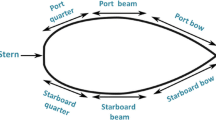Abstract
We propose a thesis that minimising dirt on the running surface of skis improves the surface glide. Waxing usually improves the gliding ability of skis in the short term. But how does waxing affect pollution absorption in the long term? In this study a number of skis with a transparent base and a white background were treated by steel scraping and with different glide waxes. The gliding ability of waxed and unwaxed skis, the sliding surface whiteness and the hydrophobicity were tested and documented. Tests were performed before and after the skis had been used for different distances. It was observed that all the waxed skis (regardless of the wax used) absorbed more dirt than unwaxed, and as a result all waxed skis lose their glide ability sooner than unwaxed (freshly scraped) skis in wet snow conditions.
Similar content being viewed by others
References
Cassie, A.B.D. & Baxter, S. (1994) Wettability of porous surfaces,Transactions of the Faraday Society 40, 546–551.
Colbeck, S.C. (1992) A review of the processes that control snow friction. InTechnical Report 2. US Army Cold Regions Research and Engineering Laboratory, Hanover, NH.
Colbeck, S.C. (1994) A review of the friction of snow skis,Journal of Sports Sciences 12, 285–295.
Colbeck, S.C. (1995) Electrical charging of skis gliding on snow,Medicine and Science in Sports & Exercise 27 (1), 136–141.
Kurtz, S.M. (2004)The UHMWPE Handbook. Elsevier Academic Press, Boston, MA, USA. URL: http://www.uhmwpe.org/
Kuzmin, L. & Tinnsten, M. (2005) Contact angles on the running surfaces of cross-country skis. In A. Subic & S. Ujihashi (eds),The Impact of Technology on Sport, Asia-Pacific Congress on Sports Technology. APCST 2005, Tokyo, pp. 318–323.
Langevin, P. (1998)Ski reporting reference guide. Sport Activité Inc., Granby, (Que) Canada.
T. Werder, J.H., Walther, R.J. & Koumoutsakos, P. (2003) Water-carbon interactions: Potential energy calibration using experimental data. InNanotech 2003, Vol. 3, NSTI Nanotechnology Conference & Trade Show, pp. 546–548, San Francisco, CA, USA. URL: www.nsti.org
Weisstein, E.W. (1994)Math World, World-Wide Web. URL: http://mathworld.wolfram.com/Correlation Coefficient.html
Wenzel, R.N. (1936) Surface roughness and contact angle,Industrial & Engineering Chemistry Research 28, 988–994.




